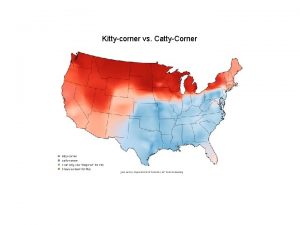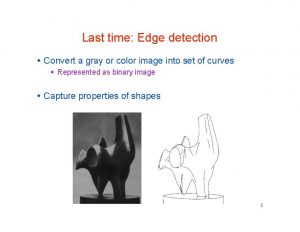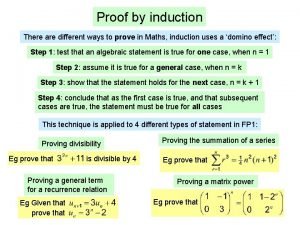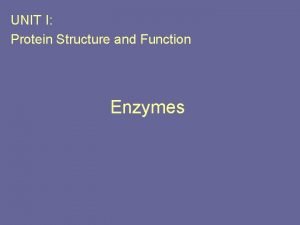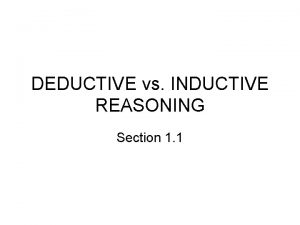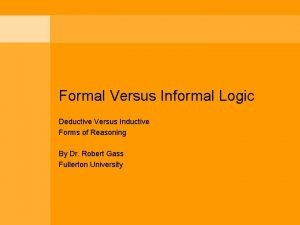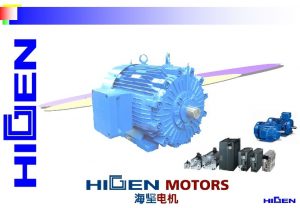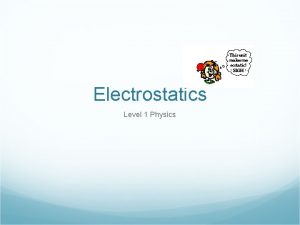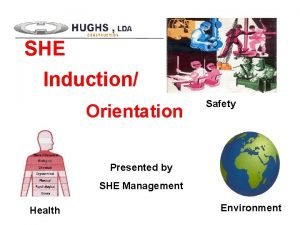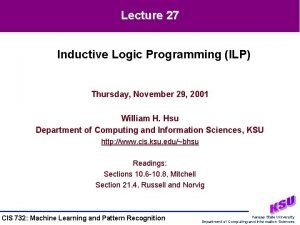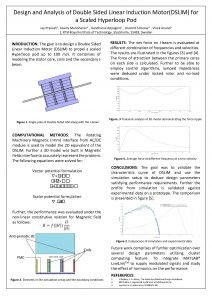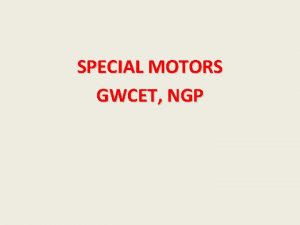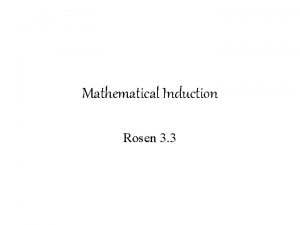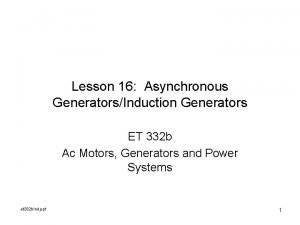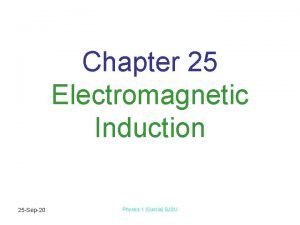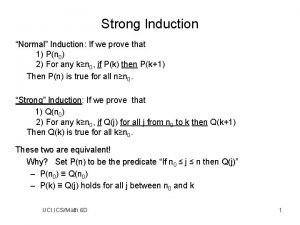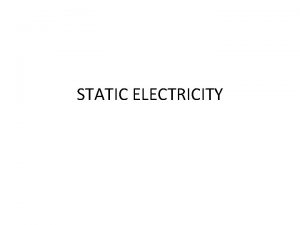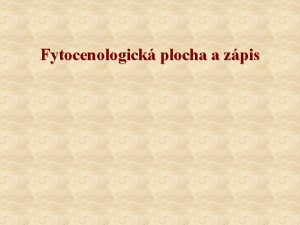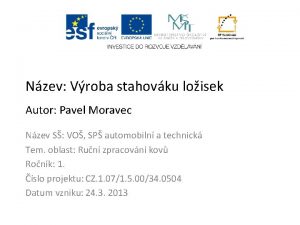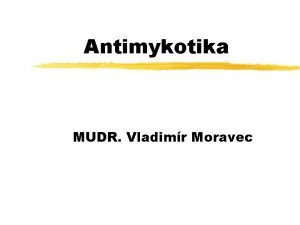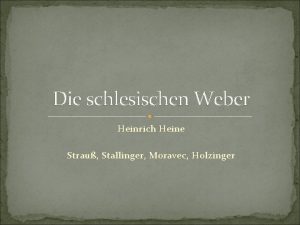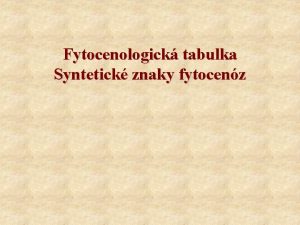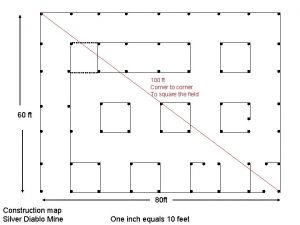Features Induction Moravec Corner Detection HarrisPlessey Corner Detection

































- Slides: 33

Features ØInduction ØMoravec Corner Detection ØHarris/Plessey Corner Detection ØFAST Corner Detection ØScale Invariant Feature Transform (SIFT) Features Based on A Practical Introduction to Computer Vision with Open. CV by Kenneth Dawson-Howe © Wiley & Sons Inc. 2014 Slide 1

Introduction – Where have the edges gone? Given two images (a) and (b) taken at different times determine the movement of edge points from frame to frame… Features Based on A Practical Introduction to Computer Vision with Open. CV by Kenneth Dawson-Howe © Wiley & Sons Inc. 2014 Slide 2

Introduction – Possible interpretations The Aperture Problem. Features Based on A Practical Introduction to Computer Vision with Open. CV by Kenneth Dawson-Howe © Wiley & Sons Inc. 2014 Slide 3

Introduction – Using Features / Corners instead Use corners / image features / interest points Corner = intersection of two edges Interest point = any feature which can be robustly detected Reduces number of points Easier to establish correspondences Spurious features Features Based on A Practical Introduction to Computer Vision with Open. CV by Kenneth Dawson-Howe © Wiley & Sons Inc. 2014 Slide 4

Introduction – Steps for corner detection 1. Determine cornerness values. For each pixel Main difference Produces a Cornerness map. 2. Non-maxima suppression. Multiple responses Compare to local neighbours 3. Threshold the cornerness map. Significant corners. Features Based on A Practical Introduction to Computer Vision with Open. CV by Kenneth Dawson-Howe © Wiley & Sons Inc. 2014 Slide 5

Moravec corner detection Looks at the local variation around a point Compares local image patches where (u, v) { (-1, -1), (-1, 0), (-1, 1), (0, -1), (0, 1) (1, -1), (1, 0), (1, 1, ) } and the Window is typically 3 x 3, 5 x 5 or 7 x 7 Select the Minimum value of Vu, v(i, j) Features Based on A Practical Introduction to Computer Vision with Open. CV by Kenneth Dawson-Howe © Wiley & Sons Inc. 2014 Slide 6

Moravec – Binary Example Corner: Edge: Minimum difference: 2 Features Minimum difference: 0 Based on A Practical Introduction to Computer Vision with Open. CV by Kenneth Dawson-Howe © Wiley & Sons Inc. 2014 Slide 7

Moravec – Flaws. Anisotropic response Diagonal lines Smoothing Noisy response Larger area Smoothing Features Based on A Practical Introduction to Computer Vision with Open. CV by Kenneth Dawson-Howe © Wiley & Sons Inc. 2014 Slide 8

Harris / Plessey corner detection Difference – Cornerness determination Uses Partial derivatives Gaussian weighting Matrix Eigenvalues Good. Features. To. Track. Detector harris_detector( 1000, 0. 01, 10, 3, true ); vector<Key. Point> keypoints; harris_detector. detect( gray_image, keypoints ); Features Based on A Practical Introduction to Computer Vision with Open. CV by Kenneth Dawson-Howe © Wiley & Sons Inc. 2014 Slide 9

Harris / Plessey corner detection Consider the intensity variation for an arbitrary shift (Δi, Δj) as If Then Features Based on A Practical Introduction to Computer Vision with Open. CV by Kenneth Dawson-Howe © Wiley & Sons Inc. 2014 Slide 10

Harris / Plessey corner detection From the matrix we can compute the Eigenvalues Both high => corner One high => edge None high => constant region Harris & Stephens proposed the following cornerness measure: Features Based on A Practical Introduction to Computer Vision with Open. CV by Kenneth Dawson-Howe © Wiley & Sons Inc. 2014 Slide 11

Harris / Plessey corner detection Features Based on A Practical Introduction to Computer Vision with Open. CV by Kenneth Dawson-Howe © Wiley & Sons Inc. 2014 Slide 12

Harris / Plessey – Pros and Cons: More expensive computationally Sensitive to noise Somewhat anisotropic Pros: Very repeatable response Better detection rate Mat display_image; draw. Keypoints( image, keypoints, display_image, Scalar( 0, 0, 255 ) ); Features Based on A Practical Introduction to Computer Vision with Open. CV by Kenneth Dawson-Howe © Wiley & Sons Inc. 2014 Slide 13

Moravec & Harris/Plessey Features Based on A Practical Introduction to Computer Vision with Open. CV by Kenneth Dawson-Howe © Wiley & Sons Inc. 2014 Slide 14

FAST Corner Detection FROM “Machine learning for high-speed corner detection”, by Edward Rosten & T. Drummond, in ECCV 2006 Technique: Considers a circle of points If an arc of >= 9 points are all brighter or darker than the centre Circle found with strength t Where t is the minimum difference between any of the points in the arc and the centre point Features Based on A Practical Introduction to Computer Vision with Open. CV by Kenneth Dawson-Howe © Wiley & Sons Inc. 2014 Slide 15

FAST Corner Detection Features Based on A Practical Introduction to Computer Vision with Open. CV by Kenneth Dawson-Howe © Wiley & Sons Inc. 2014 Slide 16

FAST Corner Detection Ptr<Feature. Detector> feature_detector = Feature. Detector: : create("FAST"); vector<Key. Point> keypoints; cvt. Color( image, gray_image, CV_BGR 2 GRAY ); feature_detector->detect( gray_image, keypoints ); // Or 5 times faster using the FASTX routine: FASTX( gray_image, keypoints, 50, true, Fast. Feature. Detector: : TYPE_9_16 ); Features Based on A Practical Introduction to Computer Vision with Open. CV by Kenneth Dawson-Howe © Wiley & Sons Inc. 2014 Slide 17

Scale Invariant Feature Transform (SIFT) FROM “Distinctive Image Features from Scale-Invariant Keypoints”, by David G. Lowe in International Journal of Computer Vision, 60, 2 (2004), pp. 91 -110 Motivation: Providing repeatable robust features for Tracking, Recognition, Panorama Stitching, etc. Features: Invariant to scaling, & rotation. Partly invariant to illumination and viewpoint changes Features Based on A Practical Introduction to Computer Vision with Open. CV by Kenneth Dawson-Howe © Wiley & Sons Inc. 2014 Slide 18

SIFT – Overview & Contents 1. Scale Space Extrema Detection Scale Space Difference of Gaussian Locate Extrema 2. Accurate Keypoint Location Sub-pixel locate Filter response – remove low contrast and features primarily along an edge 3. Keypoint Orientation assignment 4. Keypoint Descriptors Matching Descriptors – including dropping poor ones Applications Features Based on A Practical Introduction to Computer Vision with Open. CV by Kenneth Dawson-Howe © Wiley & Sons Inc. 2014 Slide 19

SIFT – Open. CV code Ptr<Feature. Detector> feature_detector = Feature. Detector: : create("SIFT"); vector<Key. Point> keypoints; feature_detector->detect( gray_image, keypoints ); Features Based on A Practical Introduction to Computer Vision with Open. CV by Kenneth Dawson-Howe © Wiley & Sons Inc. 2014 Slide 20

SIFT – Scale Space Extrema Detection For scale invariance, consider the image at multiple scales L(x, y, σ) L(x, y, k 2σ) L(x, y, k 3σ) L(x, y, σ) = G(x, y, σ)* I(x, y) Applied in different octaves of scale space Each octave corresponds to a doubling of σ Features Based on A Practical Introduction to Computer Vision with Open. CV by Kenneth Dawson-Howe © Wiley & Sons Inc. 2014 Slide 21

SIFT – Scale Space Extrema Detection Stable keypoint locations defined to be at extrema in the Difference of Gaussian (Do. G) functions across scale space… D(x, y, σ) = L(x, y, kσ) - L(x, y, σ) Extrema. . Centre point is Min or Max of Local 3 x 3 region in current Do. G and in adjacent scales IN any octave Features Based on A Practical Introduction to Computer Vision with Open. CV by Kenneth Dawson-Howe © Wiley & Sons Inc. 2014 Slide 22

SIFT – Accurate Keypoint Location Originally location and scale taken from central point Locate keypoints more precisely Model data locally using a 3 D quadratic Locate interpolated maximum/minimum Features Based on A Practical Introduction to Computer Vision with Open. CV by Kenneth Dawson-Howe © Wiley & Sons Inc. 2014 Slide 23

SIFT – Accurate Keypoint Location Discard low contrast keypoints If the local contrast is too low discard the keypoint Evaluated from the curvature of the 3 D quadratic… Features Based on A Practical Introduction to Computer Vision with Open. CV by Kenneth Dawson-Howe © Wiley & Sons Inc. 2014 Slide 24

SIFT – Accurate Keypoint Location Discard poorly localised keypoints (e. g. along an edge) Features Based on A Practical Introduction to Computer Vision with Open. CV by Kenneth Dawson-Howe © Wiley & Sons Inc. 2014 Slide 25

SIFT – Keypoint Orientation For scale invariance, the keypoint scale is used to select the smoothed image with the closet scale For orientation invariance we describe the keypoint wrt. the principal orientation Create an orientation histogram (36 bins) Weight by gradient magnitude Sample points around the keypoint Highest peak + peaks within 80% Oriented keypoint(s) Stable results…. Features Based on A Practical Introduction to Computer Vision with Open. CV by Kenneth Dawson-Howe © Wiley & Sons Inc. 2014 Slide 26

SIFT – Keypoint Description Could sample image intensity at relevant scale Match using normalized cross correlation Sensitive to affine transformations, 3 D viewpoint changes and non-rigid deformations A better approach Edelman et al. (1997) Based on a model of biological vision Consider gradients at particular orientations and spatial frequencies Location not required to be precise Features Based on A Practical Introduction to Computer Vision with Open. CV by Kenneth Dawson-Howe © Wiley & Sons Inc. 2014 Slide 27

SIFT – Keypoint Description Use blurred image at closest scale Sample points around the keypoint Compute gradients and orientations Rotate by keypoint orientation Divide region into subregions Create histograms (8 bins) for subregions Weight by gradient Weight by location (Gaussian) Distribute into bins (trilinear interpolation) Features Based on A Practical Introduction to Computer Vision with Open. CV by Kenneth Dawson-Howe © Wiley & Sons Inc. 2014 Slide 28

SIFT – Matching Keypoints Nearest neighbour matching Euclidean distance between keypoints What about keypoints which have no match? Use a global distance threshold? Compare distance to closest neighbour to distance to 2 nd closest neighbour (from a different object) Distance ratio > 0. 8 eliminates 90% false matches 5% correct matches Features Based on A Practical Introduction to Computer Vision with Open. CV by Kenneth Dawson-Howe © Wiley & Sons Inc. 2014 Slide 29

SIFT – Matching Keypoints Features Based on A Practical Introduction to Computer Vision with Open. CV by Kenneth Dawson-Howe © Wiley & Sons Inc. 2014 Slide 30

SIFT – Open. CV code Sift. Feature. Detector sift_detector; vector<Key. Point> keypoints 1, keypoints 2; sift_detector. detect( gray_image 1, keypoints 1 ); sift_detector. detect( gray_image 2, keypoints 2 ); // Extract feature descriptors Sift. Descriptor. Extractor sift_extractor; Mat descriptors 1, descriptors 2; sift_extractor. compute( gray_image 1, keypoints 1, descriptors 1 ); sift_extractor. compute( gray_image 2, keypoints 2, descriptors 2 ); … Features Based on A Practical Introduction to Computer Vision with Open. CV by Kenneth Dawson-Howe © Wiley & Sons Inc. 2014 Slide 31

SIFT – Open. CV code … // Match descriptors. BFMatcher sift_matcher(NORM_L 2); vector< DMatch > matches; matcher. match( descriptors 1, descriptors 2, matches ); // Display SIFT matches Mat display_image; draw. Matches( gray_image 1, keypoints 1, gray_image 2, keypoints 2, matches, display_image ); Features Based on A Practical Introduction to Computer Vision with Open. CV by Kenneth Dawson-Howe © Wiley & Sons Inc. 2014 Slide 32

SIFT – Recognition Match at least 3 features Cluster matches Hough transform Location (2 D) Scale Orientation Really a 6 D problem Use broad bins 30 O for orientation Factor of 2 for scale 0. 25 times image dimension for location Consider all bins with at least 3 entries Determine affine transformation Features Based on A Practical Introduction to Computer Vision with Open. CV by Kenneth Dawson-Howe © Wiley & Sons Inc. 2014 Slide 33
 Moravec corner detector
Moravec corner detector Caddy corner
Caddy corner Moravec’s paradox
Moravec’s paradox Corner detection
Corner detection Corner detection
Corner detection Fallacy of weak induction
Fallacy of weak induction Divisibility proofs
Divisibility proofs Induction presentation for new employees ppt
Induction presentation for new employees ppt Stator resistance starter
Stator resistance starter Induction vs deduction
Induction vs deduction Rainow primary school
Rainow primary school Mydmu library
Mydmu library Short wave diathermy definition
Short wave diathermy definition What is enzyme induction
What is enzyme induction Deduction vs induction
Deduction vs induction Shapet induction company
Shapet induction company Formal vs informal logic
Formal vs informal logic Enzyme induction
Enzyme induction Higen 3 phase induction motor
Higen 3 phase induction motor Electric charge
Electric charge Application of induction motor
Application of induction motor She induction
She induction No work prior to safety/environmental induction sign
No work prior to safety/environmental induction sign Induction as inverted deduction
Induction as inverted deduction Environmental induction presentation
Environmental induction presentation Linear induction motor hyperloop
Linear induction motor hyperloop Gross torque formula
Gross torque formula Repulsion start induction run motor
Repulsion start induction run motor Strong induction
Strong induction Asynchronous generator python
Asynchronous generator python An ignition coil operates using the principle of
An ignition coil operates using the principle of Induction philosophy
Induction philosophy Purdue phys 241
Purdue phys 241 What is induction in physics
What is induction in physics

